Growing pineapples at home is an exciting and rewarding experience. From the first signs of sprouting to harvesting the sweet, golden fruit, the journey is worth every moment. However, one of the most critical—and often misunderstood—parts of this process is identifying when your homegrown pineapple is perfectly ripe. Harvesting too early can result in a sour and underdeveloped taste, while waiting too long may lead to spoilage or loss of flavor. This guide provides everything you need to know to confidently determine when your pineapple is ready to pick and enjoy.
1. The Importance of Picking at the Right Time
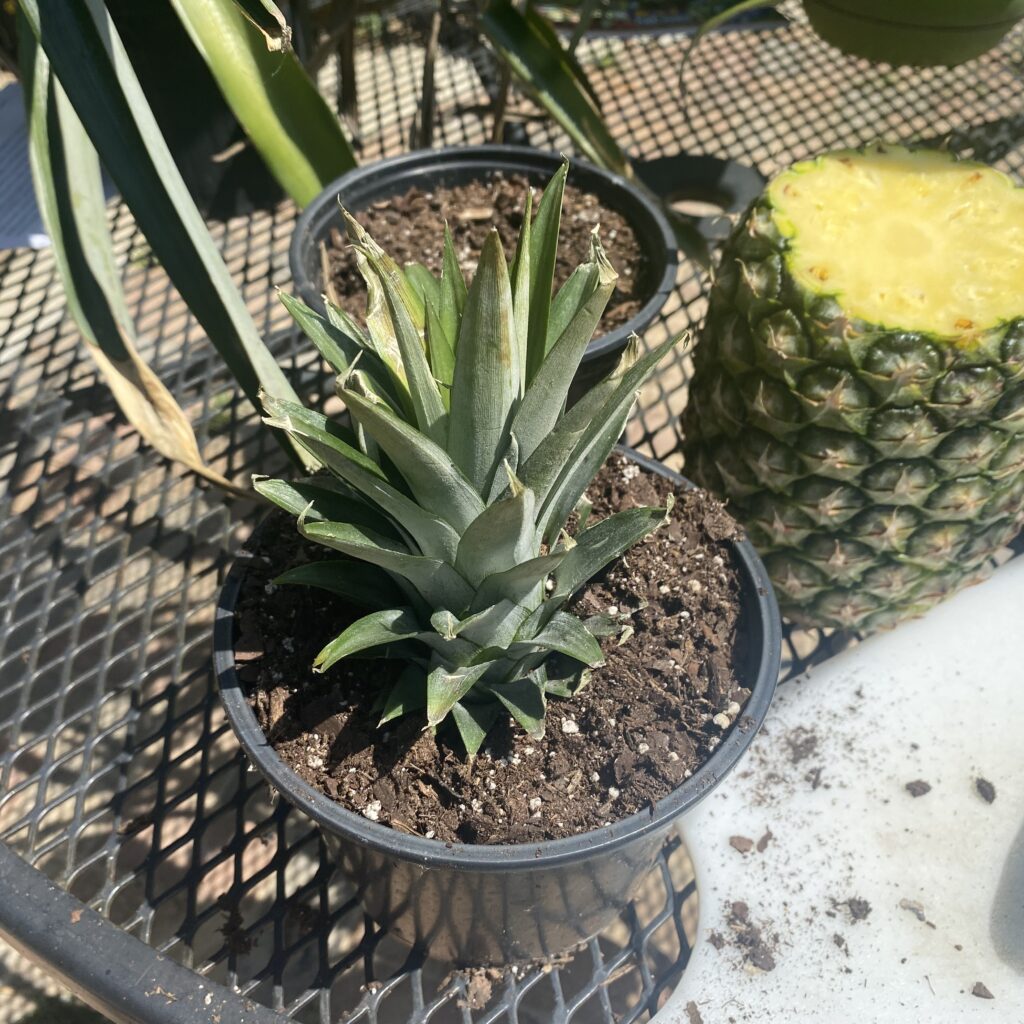
Pineapples do not continue to ripen significantly once picked. This means the fruit must be harvested at peak ripeness to ensure the best flavor, texture, and nutritional content. A ripe pineapple is not just sweeter—it’s also juicier, more aromatic, and packed with enzymes like bromelain that support digestion and reduce inflammation.
2. Understanding the Pineapple Growth Cycle

Before learning how to identify ripeness, it’s essential to understand the basic stages of pineapple development:
- Planting to Flowering: About 12–18 months after planting.
- Flowering to Fruit Development: 5–6 months.
- Fruit Maturation: The final 2–3 months, where the pineapple swells and changes color.
From planting a crown or slip, it usually takes 18 to 24 months for a pineapple to reach full maturity.
3. Top Signs Your Pineapple is Ripe
A. Color Transformation
One of the first indicators of ripeness is the change in color:
- Immature Pineapple: Completely green with no yellowing.
- Ripening Stage: Bottom of the fruit begins turning yellow.
- Fully Ripe: Rich golden-yellow color creeps up the body. Ideally, at least half to two-thirds of the fruit should be golden.
Tip: Don’t rely solely on color—use other signs too, as some varieties remain greener even when ripe.
B. Aroma at the Base

A ripe pineapple emits a sweet, tropical fragrance from its base. To test this:
- Gently sniff the bottom of the fruit.
- A strong, pleasant, fruity smell means it’s ready.
- If it smells fermented or like alcohol, it’s likely overripe.
C. Firmness and Texture
Squeeze the pineapple gently:
- A ripe one is firm but slightly yielding under pressure.
- If it’s rock hard, it needs more time.
- If it’s too soft or mushy, it’s overripe or starting to rot.
D. Leaf Test (Crown Tug Test)
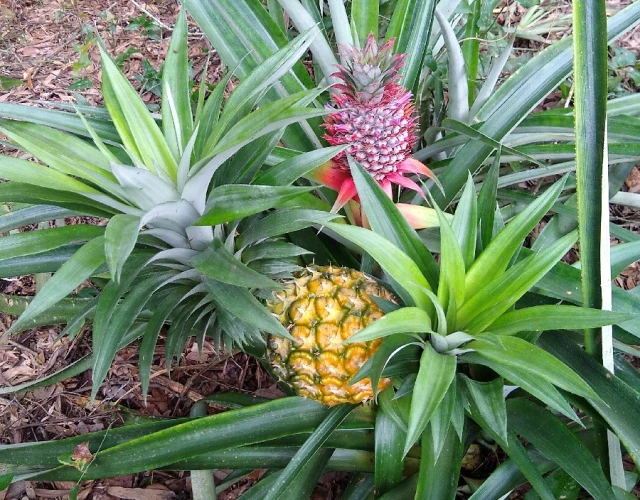
Try pulling a central leaf from the pineapple’s crown:
- If it comes out with slight resistance, the fruit is ready.
- If it pulls out too easily, the fruit might be past its peak.
- If it doesn’t budge, give it more time.
E. Sound Check (Advanced Tip)
Gently tap the pineapple:
- A dull, hollow sound may suggest ripeness.
- A high-pitched or metallic sound may indicate it’s still green.
This method is less reliable alone but can be useful when paired with others.
4. Harvesting Your Pineapple
Once you’ve identified that your pineapple is ripe, here’s how to harvest it properly:
Step-by-Step Harvesting Guide:
- Wear gloves (optional): Pineapple leaves can be sharp.
- Use a sharp knife or garden pruners.
- Cut the fruit at the base, leaving a short stem attached to the fruit.
- Avoid damaging the central stem—your plant may produce additional fruit (a ratoon crop).
5. Avoid These Common Mistakes
- Harvesting too early: Pineapples won’t sweeten significantly post-harvest.
- Waiting too long: The fruit can become fibrous, overripe, or attacked by pests.
- Ignoring weather cues: Heavy rains before ripeness can cause fruit splitting or sourness.
6. Factors That Influence Ripening Time
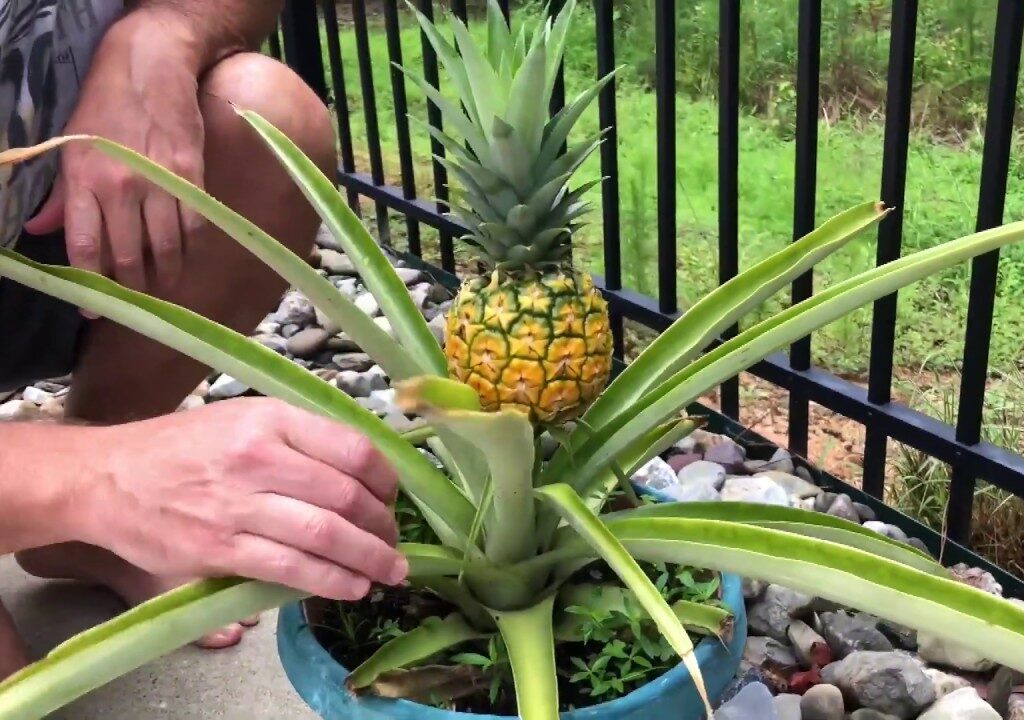
A. Climate and Temperature
Pineapples grow best in warm, tropical conditions (70°F–85°F or 21°C–29°C). Colder temperatures may delay ripening.
B. Sun Exposure
A sunny location helps the plant photosynthesize and fuels faster fruit development.
C. Variety
Different varieties ripen differently:
- Smooth Cayenne: Common, turns yellow when ripe.
- Queen: Smaller, sweeter, remains greener.
- Red Spanish: Firm texture, reddish tinge when ripe.
Always know your variety to better understand visual cues.
7. What to Do After Harvest
Once harvested, here’s how to enjoy and preserve your pineapple:
A. Eating Fresh
- Peel and slice immediately for the sweetest experience.
- Store cut fruit in the refrigerator for up to 5–7 days.
B. Storing Whole
- A ripe pineapple can last 2–3 days at room temperature.
- Refrigerated, whole fruit can last 5–7 days.
C. Preserving
- Freeze for smoothies.
- Dehydrate slices for a chewy treat.
- Can in syrup for long-term storage.
8. Bonus: Can You Ripen Pineapples Indoors?
If you’ve harvested a slightly underripe pineapple:
- Place it in a paper bag with an apple or banana (produces ethylene gas).
- Wait 1–2 days in a warm, dark place.
- Note: This softens the fruit but won’t significantly increase sugar content.
9. Signs of Overripeness or Spoilage
It’s important to know when you’ve waited too long:
- Overly soft spots or mushy flesh.
- Fermented smell or off-putting aroma.
- Dark brown spots, mold, or leaking juice.
- Sour or fizzy taste when eating.
Always err on the side of slightly under instead of way overripe.
10. Conclusion
Identifying a ripe homegrown pineapple is a skill that combines observation, touch, and a bit of experience. Look for golden color, a sweet aroma at the base, slight give to the touch, and a crown leaf that tugs out easily. While pineapples won’t continue ripening much once picked, learning the signs of true ripeness ensures every harvest is flavorful and satisfying.
With this knowledge, you can confidently grow and enjoy your own pineapples at home—no more guesswork, just tropical sweetness straight from your garden!

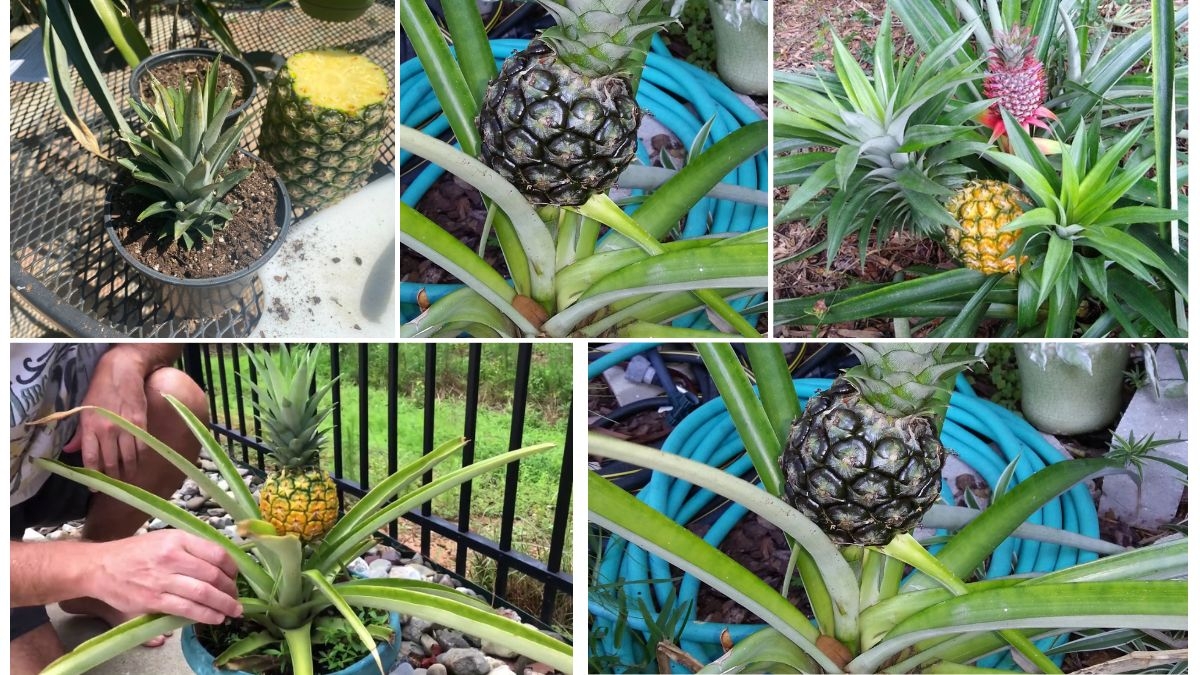
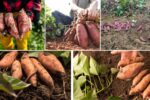



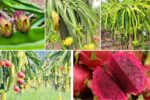
Leave A Comment